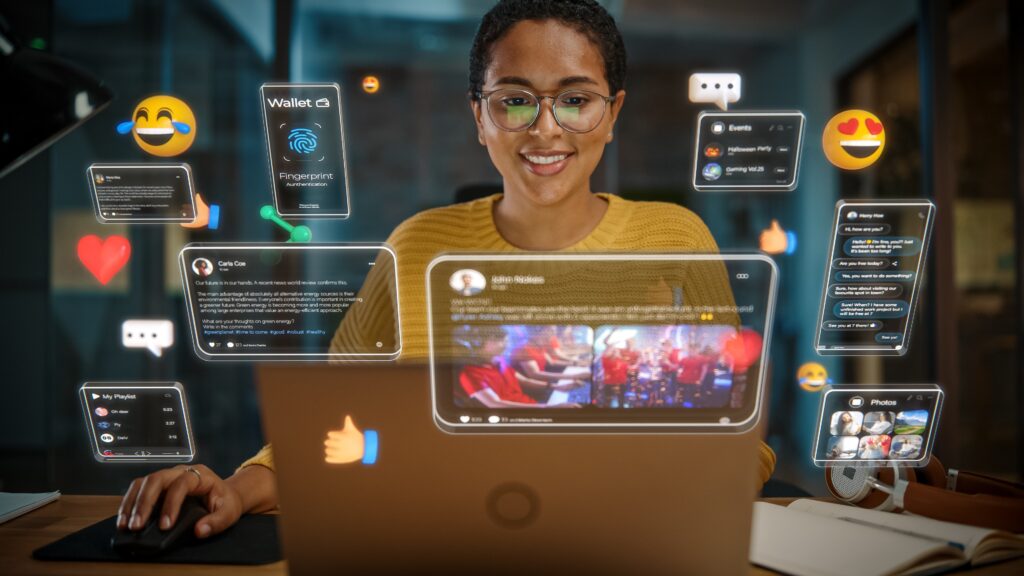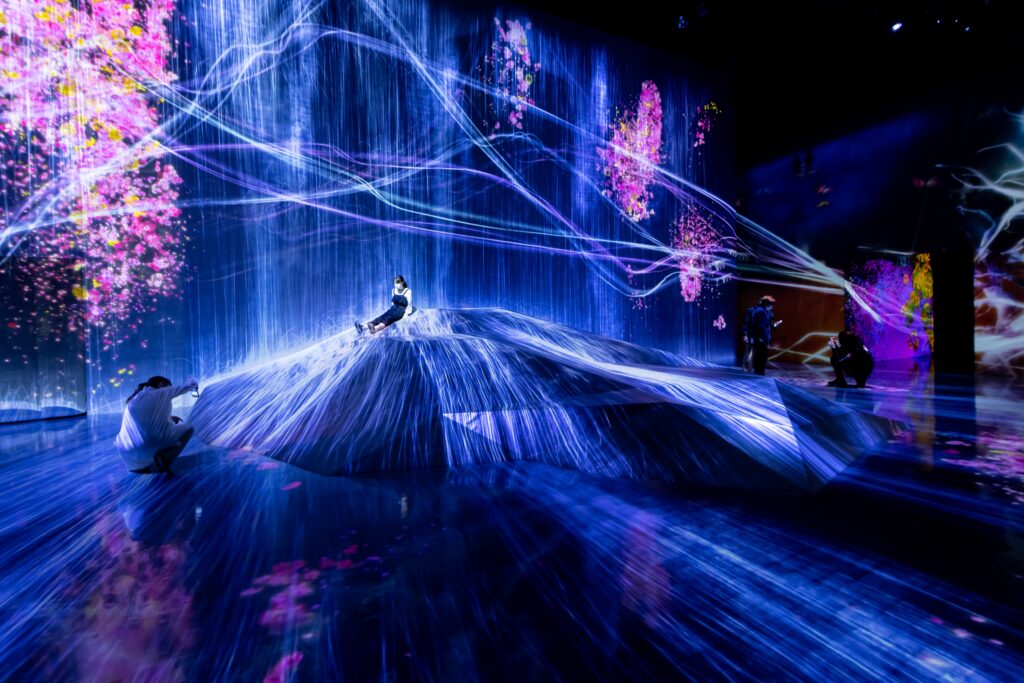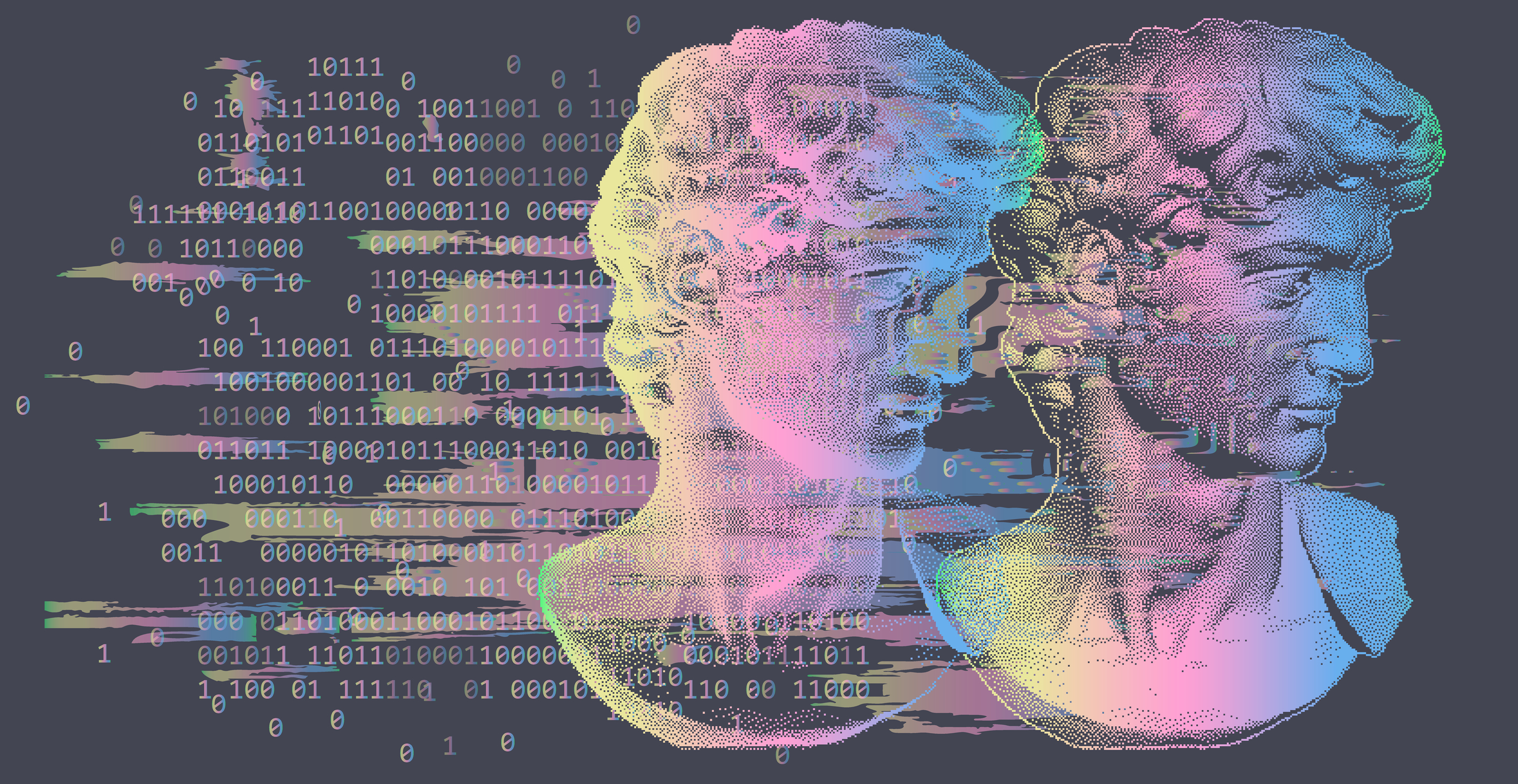My Cyber Life
by Mihaela Manolache
Anthropology is the study of human behaviour to understand the evolutionary origins and the development of societies and cultures. In globalised and multilayered technologies, the nature of the human relationship changed and a separate research wing has developed recently. Digital anthropology studies are only at the beginning and include in their area of interest techno-anthropology, ethnography, cyber anthropology, and virtual anthropology.
The complexity of the domain reveals how human relationships change in the context of technology interactions. Social platforms such as WhatsApp, Meta, Skype, Twitter, TikTok, and virtual environments transform behaviours from social, cultural, and economic points of view, becoming an international phenomenon. The changes occur simultaneously on different continents and studies of how the new human acts could help authorities establish global platforms of culture for the benefit of all nationalities.
Join our free online talks:
Digital anthropology refers to our everyday online and web interactions. Cyber studies conduct investigations about digital human interconnection. As a broader term, digital culture is about the mass use of digital devices and the online social behaviour derived from it in comparison to real societal patterns. A cyber persona lives in the online medium, in cyberspace. This is described as a world distinct from reality where people can use fake identities and live alternative lives. So where do the two entities communicate if any and what do they tell us about the new type of individuals?
Cyberspace
One definition of cyberspace is the environment where digital technology is joined. The space is designed to create, store, and use the information internationally with few resources at hand. Although the concept was invented by science-fiction literature, today most scholars use it to describe the global network of technological information, infrastructures, and processing systems. During the 1990s’ expansion of technology, people used the term cyberspace to define the new devices, possibilities, software, processes, and interactions that were happening without taking a physical form.

Individuals accessing the internet and the technologies associated create new social experiences, interactions, business management, create art, and learn within internet culture. The cybernauts’ desire to access the internet is conducted by the need of fulfilling emotional gaps, seeking richness in new experiences, and profundity in virtual space. From this perspective, cyberspace is a prolongation of the real world, taking online communication between people to another level.
In comparison to the real world, there is no central entity to regulate cyberspace, but this does not mean there are no hierarchies within it. Cyberspace is characterised by a clear set of computational structures. For instance, the United States Department of Defence considers cyberspace an interdependent domain, one of the five global domains within the information environment. The list is completed by land, air, maritime, and space domains. Due to its position as a strategic field, many wonder about the international competition to dominate cyberspace, about security in such an unstable medium and the impact on the economic and political sectors of society.

Some of the contemporary cyber challenges are identity tracking, money laundering, espionage, terrorism, theft, and data leaks. Cyber-attacks are a constant threat to the virtual environment. Companies struggle to stay above the phenomenon as the security of their users and their goods is essential to make cyberspace safe and welcoming for individuals and commercial societies.
Virtual environment
Cyberspace is a prolific medium for individuals to immerse in virtual reality. For instance, playing video games is an expression of experiencing social events accessible regardless of geographical placement. Wearable gadgets are now tools to explore places, events, touristic destinations, fitness measurements, and basic health instruments providing information such as pulse, blood pressure, calorie burn, etc.
Devices have been equipped with sensors, signals, controllers, and transmission networks able to produce virtual experiences with different layers of depth. The virtual world is based upon reality and through 3D displays, one can move and interact with features of the simulated sphere.
A virtual environment constructing the elements as accurately as possible is essential for its success. Applications made for military, aviation, medical, and construction modelling purposes need to be as close as possible to the real world. Commercial development of virtual environments instead, created a niche for entertainment and social purposes where colleagues, partners, and family can stand in the same room even though, physically speaking, they are in different corners of the world. Commercial devices simulating virtual environments include video games, cinema, amusement rides, and social virtual worlds.

Generally speaking, the applications offer many advantages that encourage communication, experiences, and learning. However, exposure to the virtual world has its downsides, especially if exposure has occurred to children and teenagers. Virtual reality systems include leaflets that contain several consumer warnings such as behavioural issues for children, discomfort, seizures, virtual reality sickness (or cybersickness), eye fatigue, nausea, disorientation, etc. In cyberspace, teenagers experience adventures that are forbidden in the real world such as putting things on fire. As real society is restrictive, young people are tempted to retreat from the real world and live a parallel life in the virtual environment.
VR infrastructure is almost limitless, a place where individuals can retreat and develop new identities, make friends, or simulate jobs. By moving human connections in cyberspace, the empowerment of technology over humanity questions existence at a philosophical and ethical level.
Digital Cultural Experience
The cultural domain has largely benefited from digital innovations. With applications and virtual tools, a cultural visit has transformed from a passive observation activity to an immersive experience. Museums offer digital tours, object explorations, educational platforms, and most important, worldwide access. The cultural discourse has become contemporary thanks to virtual possibilities. Archeological sites are now a place where human activity can be seen and touched while exploring the ruins, and better understand if we consider holograms and virtual reconstructions. The perception of an ancient world can be more real by visualizing in VR the missing pieces. Sculptures can be more dynamic if we increase details and explore them carefully.

However, a virtual experience of a museum cannot replace the visit itself. In the physical absence of the subject, the understanding of the matter is partial, from a sole perspective only – the initiator, in this case, the museum. A physical experience triggers other factors as well such as the environment, surroundings, climate, geography, local materials, and 360 degrees of perception, determining the individual to think of an overall image when it comes to a comprehensive understanding of human history. Physical attendance at a cultural objective can be enriched by virtual means, but never replaced.
Mass media, music, theatre, art, and architecture have all improved their communicative resources and created an extension of their activities in cyberspace, allowing navigation from a wide range of technological devices. By being part of cyberspace, the user is not a sole receiver anymore but can be an initiator and distributor of news and trends.
Homo Digitalis
A name has been starting to grow in popularity describing the new type of individual – ”homo digitalis”. This is a person whose life is partly happening in the online medium. They are being permanently connected to screens and displays as we are now experiencing an era in which digital opportunity is a way to self-improve. Technology resolves many of our individual needs and centers us around people. Our ability to embrace life digitalization and learn self-promotion will shortly dictate personal success.
Second Life is an online virtual universe with millions of users ready to discover virtual experiences. In this game, one can explore urban and natural places, meet people, share stories, find a community, buy and sell, and experience social spaces and remote meetings. Just like in real life, here participants can enjoy diversity, religion, debates, and classes without any fear of being discovered as the presence in the game is anonymous. So, during the Second Life interactions, individuals free themselves from real-life constraints giving voice without fear to their most intimate thoughts.

However, some users of the Second Life state that the world does not allow any profound understanding of life or relationships. At a social level, the game seems to be attractive but does not facilitate real emotional connection as the avatar is an invented individual, not the person behind the screen. Activities such as meditation are not suitable for cyber life because people do not meditate in front of a display.
For many reasons, people embrace technology. To progress at work, revolutionize industries, help the elderly, stimulate learning and education, and solve human crises. The advantages of technology in our lives are unquestionable. On one hand, approaching people globally is a fact that would have never been possible before, on the other alternative universe in the virtual world will change forever the way we interact and relate to family, find a partner, and socialize. This can also have effects on our body health and physical accessibility. In the future, we might prefer virtual socializing to physical interaction.
Digital anthropology is the right domain that will take the study further away and analyse human behaviour as we accept technology as an undeniable part of our daily routine. Our world is unstable, every day changing and even an experiment, as we have never lived so intertwined with devices as today.
GET MORE FROM LEVEL


Leave a Reply